Scholars and great minds help us shape our ideas and analysis of situations regarding disability in the arts. Great minds have worked together on books to help us understand the principles of Critical Disability Studies. This field is fairly new and changes regularly, creating opportunities to think of where our creativity goes and what the place of disabled artists is in our society.
In this section, you will find links to digital accessible and paper versions of books. Kindle offers reading applications and tools that work with assistive technology and propose settings for all users. The digital version is usually cheaper than the paper version. For each book, you will find Amazon affiliate products, and WorldCat links for universities and libraries.
If you have an idea or a suggestion of product that you think should be added here, don’t hesitate to contact us.
Music
The Oxford Handbook of Music and Disability Studies (Oxford Handbooks) Reprint Edition
by Blake Howe (Editor), Stephanie Jensen-Moulton (Editor), Neil Lerner (Editor), Joseph Straus (Editor)
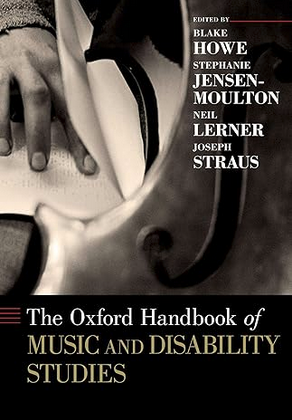
The Oxford Handbook of Disability Studies represents a comprehensive state of current research for the field of Disability Studies and Music. The forty-two chapters in the book span a wide chronological and geographical range, from the biblical, the medieval, and the Elizabethan, through the canonical classics of the eighteenth and nineteenth centuries, up to modernist styles and contemporary musical theater and popular genres, with stops along the way in post-Civil War America, Ghana and the South Pacific, and many other interesting times and places. Disability is a broad, heterogeneous, and porous identity, and that diversity is reflected in the variety of bodily conditions under discussion here, including autism and intellectual disability, deafness, blindness, mobility impairment often coupled with bodily difference, and cognitive and intellectual impairments. Amid this diversity of time, place, style, medium, and topic, the chapters share two core commitments. First, they are united in their theoretical and methodological connection to Disability Studies, especially its central idea that disability is a social and cultural construction. Disability both shapes and is shaped by culture, including musical culture. Second, these essays individually and collectively make the case that disability is not something at the periphery of culture and music, but something central to our art and to our humanity.
Link to the Kindle version: https://amzn.to/3uDSzqu
Link to the paper version: https://amzn.to/3USWlHB
Link to WorldCat for university students/staff and libraries: https://search.worldcat.org/title/910309803
Hearing Beethoven: A Story of Musical Loss & Discovery
by Robin Wallace (Author)
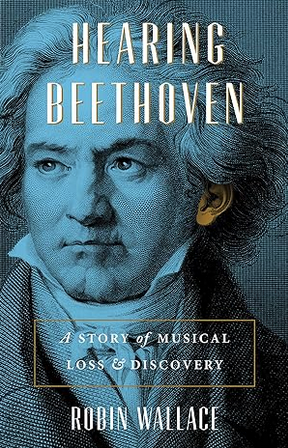
We’re all familiar with the image of a scowling Beethoven, struggling to overcome his rapidly progressing deafness. That Beethoven continued to play and compose for more than a decade after he lost his hearing is often seen as an act of superhuman heroism. But the truth is that Beethoven’s response to his deafness was entirely human. And by demystifying what he did, we can learn a great deal about Beethoven’s music. No one is better positioned to help us do so than Robin Wallace, who not only has dedicated his life to the music of Beethoven but also has close personal experience with deafness. Wallace’s late wife, Barbara, lost her hearing. Despite receiving a cochlear implant, Barbara didn’t overcome her deafness or ever function again like a hearing person. Beethoven also never overcame his deafness. But the composer accomplished something even more challenging: he adapted to his hearing loss and changed the way he interacted with music, revealing important aspects of its very nature in the process. Wallace tells the story of Beethoven’s creative life, interweaving it with his and Barbara’s experience to reveal aspects that only living with deafness could open up. The result makes Beethoven and his music more accessible, helping us see how a disability can enhance human wholeness.
Link to the Kindle version: https://amzn.to/3wg6kfO
Link to the paper version: https://amzn.to/3ujYNfn
Link to WorldCat for university students/staff and libraries: https://search.worldcat.org/title/1019844973
Extraordinary Measures: Disability in Music 1st Edition
by Joseph N. Straus (Author)
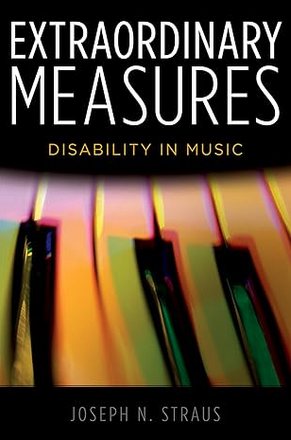
Approaching disability as a cultural construction rather than a medical pathology, this book studies the impact of disability and concepts of disability on composers, performers, and listeners with disabilities, as well as on discourse about music and works of music themselves. For composers with disabilities–like Beethoven, Delius, and Schumann–awareness of the disability sharply inflects critical reception. For performers with disabilities–such as Itzhak Perlman and Evelyn Glennie–the performance of disability and the performance of music are deeply intertwined. For listeners with disabilities, extraordinary bodies and minds may give rise to new ways of making sense of music. In the stories that people tell about music, and in the stories that music itself tells, disability has long played a central but unrecognized role. Some of these stories are narratives of overcoming-the triumph of the human spirit over adversity-but others are more nuanced tales of accommodation and acceptance of life with a non-normative body or mind. In all of these ways, music both reflects and constructs disability.
Link to the Kindle version: https://amzn.to/49w9Lgs
Link to the paper version: https://amzn.to/3SCtYuo
Link to WorldCat for university students/staff and libraries: https://search.worldcat.org/title/609101212
Theatre
Disability Theatre and Modern Drama: Recasting Modernism (Critical Companions) 1st Edition
by Kirsty Johnston (Author)
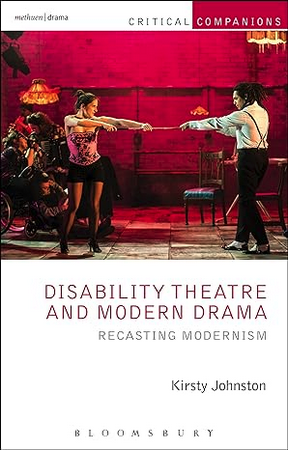
Bertolt Brecht’s silent Kattrin in Mother Courage, or the disability performance lessons of his Peachum in The Threepenny Opera; Tennessee Williams’ limping Laura Wingfield in The Glass Menagerie and hard-of-hearing Bodey in A Lovely Sunday for Creve Coeur; Samuel Beckett’s blind Hamm and his physically disabled parents Nagg and Nell in Endgame – these and many further examples attest to disability’s critical place in modern drama. This Companion explores how disability performance studies and theatre practice provoke new debate about the place of disability in these works. The book traces the local and international processes and tensions at play in disability theatre, and offers a critical investigation of the challenges its aesthetics pose to mainstream and traditional practice. The book’s first part surveys disability theatre’s primary principles, critical terms, internal debates and key challenges to theatre practice. Examining specific disability theatre productions of modern drama, it also suggests how disability has been re-envisaged and embodied on stage. In the book’s second part, leading disability studies scholars and disability theatre practitioners analyse and creatively re-imagine modern drama, demonstrating how disability aesthetics press practitioners and scholars to rethink these works in generative, valuable and timely ways.
Link to the Kindle version: https://amzn.to/3wcp3Zu
Link to the paper version: https://amzn.to/3SA67eT
Link to WorldCat for university students/staff and libraries: https://search.worldcat.org/title/938563197
Multidisciplinary
Disability and Art History (Interdisciplinary Disability Studies) 1st Edition
by Ann Millett-Gallant (Editor), Elizabeth Howie (Editor)
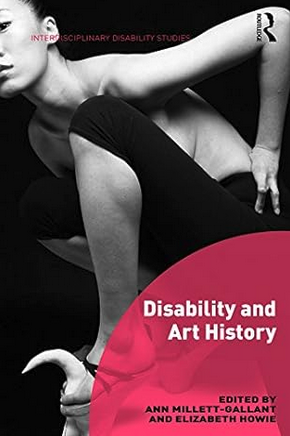
This is the first book of its kind to feature interdisciplinary art history and disability studies scholarship. Art historians have traditionally written about images of figures with impairments and artworks by disabled artists, without integrating disability studies scholarship, while many disability studies scholars discuss works of art, but do not necessarily incorporate art historical research and methodology. The chapters in this volume emphasize a shift away from the medical model of disability that is often scrutinized in art history by considering the social model and representations of disabled figures from a range of styles and periods, mostly from the twentieth century. Topics addressed include visible versus invisible impairments; scientific, anthropological, and vernacular images of disability; and the theories and implications of looking/staring versus gazing. They also explore ways in which art responds to, envisions, and at times stereotypes and pathologizes disability. The insights offered in this book contextualize understanding of disability historically, as well as in terms of medicine, literature, and visual culture.
Link to the Kindle version: https://amzn.to/3wa669L
Link to the paper version: https://amzn.to/49scirX
Link to WorldCat for university students/staff and libraries: https://search.worldcat.org/title/962813418
Contemporary Art and Disability Studies (Routledge Advances in Art and Visual Studies)
by Alice Wexler (Author) and John Derby (Author)
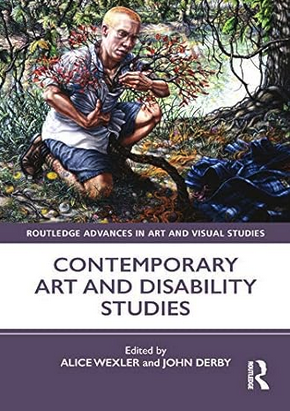
This book presents interdisciplinary scholarship on art and visual culture that explores disability in terms of lived experience. It will expand critical disability studies scholarship on representation and embodiment, which is theoretically rich, but lacking in attention to art. It is organized in five thematic parts: methodologies of access, agency, and ethics in cultural institutions; the politics and ethics of collaboration; embodied representations of artists with disabilities in the visual and performing arts; negotiating the outsider art label; and first-person reflections on disability and artmaking. This volume will be of interest to scholars who study disability studies, art history, art education, gender studies, museum studies, and visual culture.
Link to the Kindle version: https://amzn.to/49esqh9
Link to the paper version: https://amzn.to/3SSgQm1
Link to WorldCat for university students/staff and libraries: https://search.worldcat.org/title/1130020463
The Art of Disability: A handbook about Disability Representation in Media
by David Proud (Author)
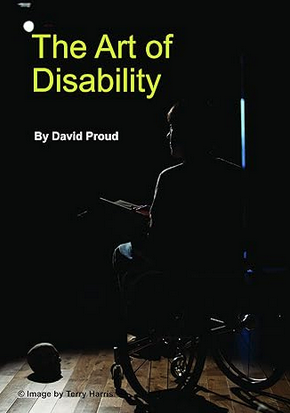
“All the worlds a stage, and both have bad wheelchair access.” Led by David Proud and sharing his decade of experience working as an Actor, Writer and Producer for some of the world’s leading broadcasters, we embark on a journey into disability representation in media. Can disability be seen as an art Why is it important to modern day culture? How can we increase diversity of disability in media? Featuring contributions from leading industry figures the book covers all disciplines and offers practical advice to anyone working with disabled artists. Providing a ground breaking methodology to help new disabled actors approach acting with a disability. Your accessible journey into disability diversity starts here.
Link to the Kindle version: https://amzn.to/42wR229
Link to the paper version: https://amzn.to/3UAz2Sn
Link to WorldCat for university students/staff and libraries: https://search.worldcat.org/title/1018086533
Disability Arts and Culture: Methods and Approaches
by Petra Kuppers (Editor)
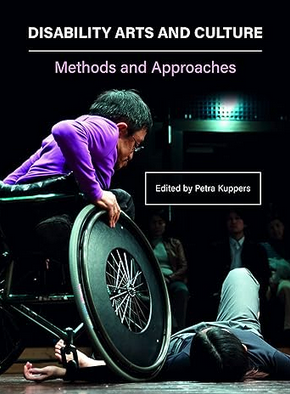
This collection offers insight into different study approaches to disability art and culture practices, and asks: what does it mean to approach disability-focused cultural production and consumption as generative sites of meaning-making? International scholars and practitioners use ethnographic and participatory action research approaches; textual and discourse analysis; as well as other methods to discover how disability figures into our contemporary world(s). Chapters within the collection explore, amongst other topics, deaf theatre productions, representations of disability on-screen, community engagement projects and disabled bodies in dance. Disability Arts and Culture provides a comprehensive overview and a range of case studies benefitting both the practitioner and scholar.
Link to the Kindle version: https://amzn.to/4bAYkWD
Link to the paper version: https://amzn.to/3uuKzYY
Link to WorldCat for university students/staff and libraries: https://search.worldcat.org/title/1065720395
Disability and Contemporary Performance: Bodies on the Edge
by Petra Kuppers (Author)
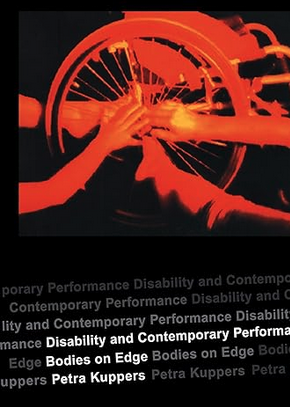
Disability and Contemporary Performance presents a remarkable challenge to existing assumptions about disability and artistic practice. In particular, it explores where cultural knowledge about disability leaves off, and the lived experience of difference begins. Petra Kuppers, herself an award-winning artist and theorist, investigates the ways in which disabled performers challenge, change and work with current stereotypes through their work. She explores freak show fantasies and ‘medical theatre’ as well as live art, webwork, theatre, dance, photography and installations, to cast an entirely new light on contemporary identity politics and aesthetics. This is an outstanding exploration of some of the most pressing issues in performance, cultural and disability studies today, written by a leading practitioner and critic.
Link to the Kindle version: https://amzn.to/490wSA1
Link to the paper version: https://amzn.to/49tX4Tv
Link to WorldCat for university students/staff and libraries: https://search.worldcat.org/title/52738262
Concerto for the Left Hand: Disability and the Defamiliar Body
by Michael Davidson (Author)
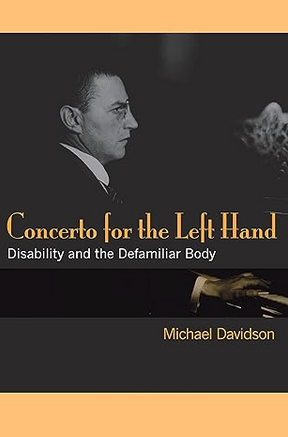
Concerto for the Left Hand is at the cutting edge of the expanding field of disability studies, offering a wide range of essays that investigate the impact of disability across various art forms—including literature, performance, photography, and film. Rather than simply focusing on the ways in which disabled persons are portrayed, Michael Davidson explores how the experience of disability shapes the work of artists and why disability serves as a vital lens through which to interpret modern culture. Covering an eclectic range of topics—from the phantom missing limb in film noir to the poetry of American Sign Language—this collection delivers a unique and engaging assessment of the interplay between disability and aesthetics. Written in a fluid, accessible style, Concerto for the Left Hand will appeal to both specialists and general audiences. With its interdisciplinary approach, this book should appeal not only to scholars of disability studies but to all those working in minority art, deaf studies, visual culture, and modernism.
Link to the Kindle version: https://amzn.to/49NuZXB
Link to the paper version: https://amzn.to/49vJGxY
Link to WorldCat for university students/staff and libraries: https://search.worldcat.org/title/680017744
Disability, Media, and Representations: Other Bodies (Routledge Research in Disability and Media Studies)
by Jacob Johanssen (Editor), Diana Garrisi (Editor)
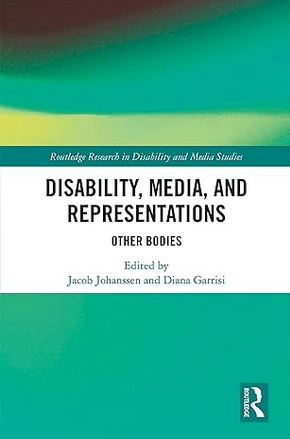
Bringing together scholars from around the world to research the intersection between media and disability, this edited collection aims to offer an interdisciplinary exploration and critique of print, broadcast and online representations of physical and mental impairments. Drawing on a wide range of case studies addressing how people can be ‘othered’ in contemporary media, the chapters focus on analyses of hateful discourses about disability on Reddit, news coverage of disability and education, media access of individuals with disabilities, the logic of memes and brain tumour on Twitter, celebrity and Down Syndrome on Instagram, disability in TV drama, the metaphor of disability for the nation; as well as an autoethnography of treatment of breast cancer. Providing a much-needed global perspective, Disability, Media, and Representations examines the relationship between self-representation and representations in either reinforcing or debunking myths around disability, and ways in which academic discourse can be differently articulated to study the relationship between media and disability. This book will be of interest to students and researchers of disability studies and media studies as well as activists and readers engaged in debates on diversity, inclusivity and the media.
Link to the Kindle version: https://amzn.to/3SUg5rJ
Link to the paper version: https://amzn.to/3SRcBay
Link to WorldCat for university students/staff and libraries: https://search.worldcat.org/title/1142870289
Documentary and Disability
by Catalin Brylla (Editor), Helen Hughes (Editor)
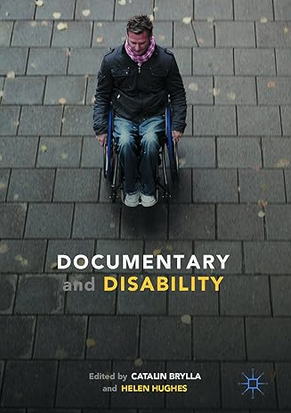
This edited collection of contributions from media scholars, film practitioners and film historians connects the vibrant fields of documentary and disability studies. Documentary film has not only played an historical role in the social construction of disability but continues to be a strong force for expression, inclusion and activism. Offering essays on the interpretation and conception of a wide variety of documentary formats, Documentary and Disability reveals a rich set of resources on subjects as diverse as Thomas Quasthoff’s opera performances, Tourette syndrome in the developing world, queer approaches to sexual functionality, Channel 4 disability sports broadcasting, the political meaning of cochlear implant activation, and Christoph’s Schlingensief’s celebrated Freakstars 3000.
Link to the Kindle version: https://amzn.to/42C61Yv
Link to the paper version: https://amzn.to/42CJ7R6
Link to WorldCat for university students/staff and libraries: https://search.worldcat.org/title/1004377933
